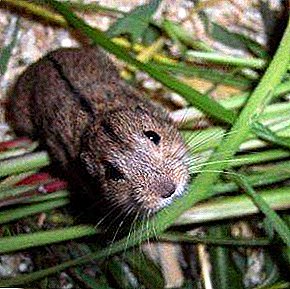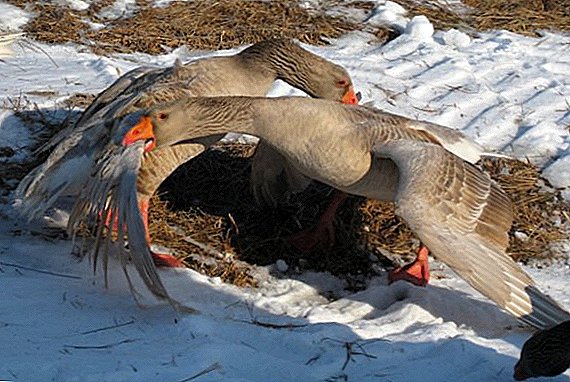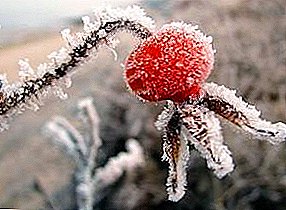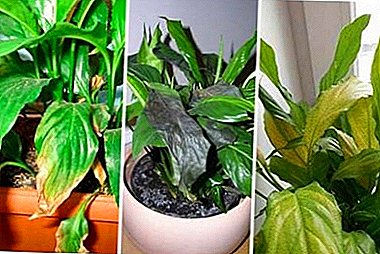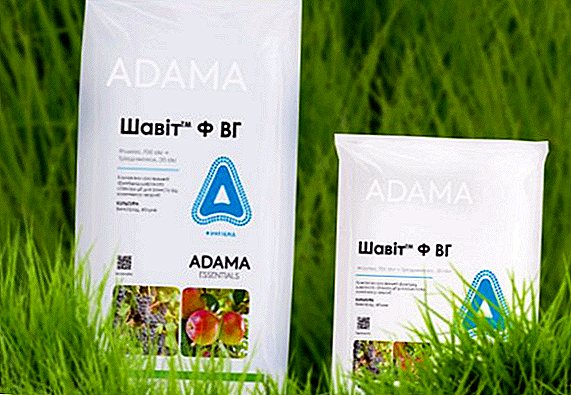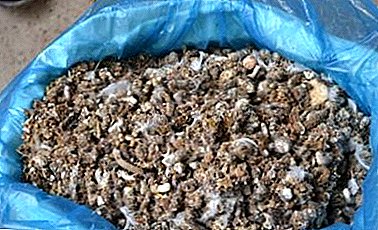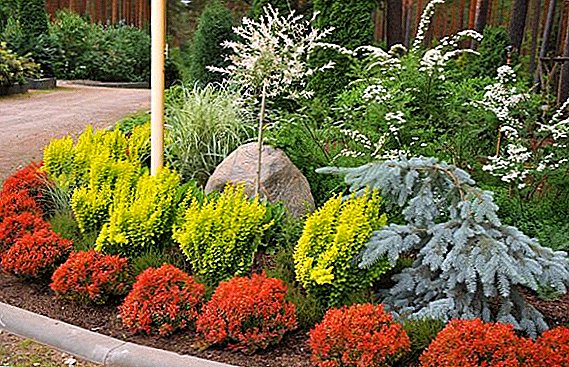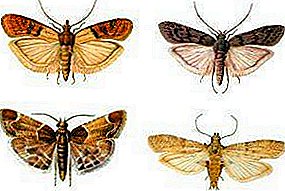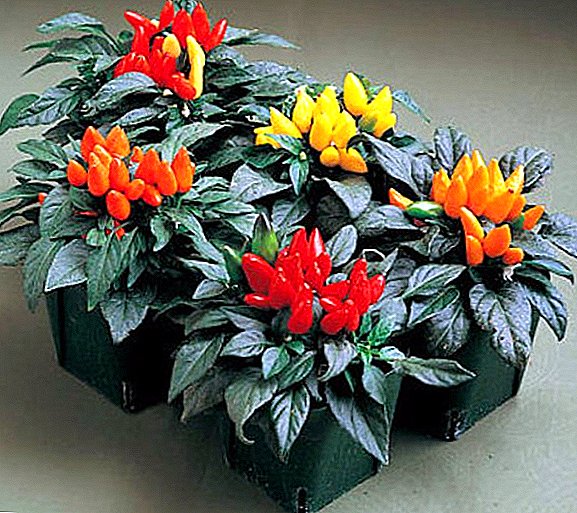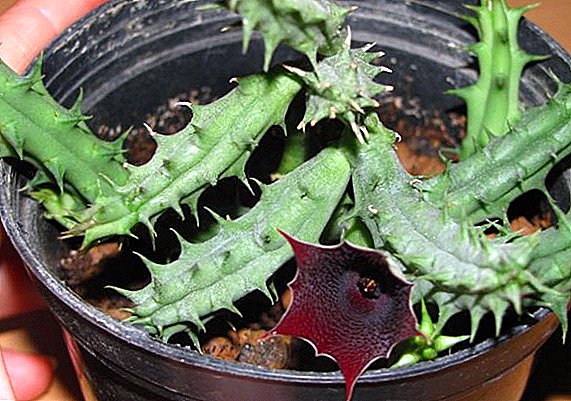 Rough gravel - an exotic succulent plant belonging to the Lastovnev family, it grows in arid regions of South Africa and the Arabian Peninsula. In our country, this flower is found only in room culture, and that is rare, because, despite its endurance, it is too sensitive to a humid and cold climate. How to create a comfortable environment for a house in powerhouse and what difficulties may arise when growing it - read on about it below.
Rough gravel - an exotic succulent plant belonging to the Lastovnev family, it grows in arid regions of South Africa and the Arabian Peninsula. In our country, this flower is found only in room culture, and that is rare, because, despite its endurance, it is too sensitive to a humid and cold climate. How to create a comfortable environment for a house in powerhouse and what difficulties may arise when growing it - read on about it below.
Botanical characteristics of the plant
Huernia rough (Huernia aspera) is a perennial bushy succulent about 20 cm high. The roots are small, filiform, located close to the soil surface. Stems elongated, fleshy, branched and slightly razlohie at the base. Each shoot has 5 weakly pronounced ribs, covered along the entire length with sharp and hard teeth. The color of the vegetation is pale green with a pinkish tint at the top.
Did you know? The flowers of the Guernia emit a very pungent odor, which is intensified by the sun. This scent attracts pollinating flies, but is completely unpleasant for humans.
This species blooms with delightful single or paired flowers of rich burgundy-red shades. The flowers are small, 2-3 cm in diameter, have the form of a bell with five large pointed petals. The base of the tube is covered with soft dark fibers. The corolla itself is colored lilac outside and burgundy or bright red inside. Flowering is abundant, lasts 2-3 months, after which, in case of successful pollination by flies, a small soft fruit with small seeds inside ripens on the place of the flower. 
Optimum conditions for growing at home
Guernia is considered an unpretentious plant, but in the home culture you should try to create comfortable conditions for it, close to the natural habitat.
Lighting
The flower is very thermophilic, so the hot air and the bright sun have a beneficial effect on it. In winter, he feels great on the windowsill, facing south or southeast, in summer, on the open balcony, veranda, and even better - in the open air. Well, if the direct rays fall on the plant in the morning and afternoon hours. On a hot summer afternoon, the flower must be shaded so that the stems do not get burned.
Important! Do not place the powerhouse on the window sills on the north side of the house. Poor lighting will lead to the fact that the shoots of the plant will stretch, and the flowering will not come at all.
If the pot is standing on the window, then from the sunny side you can set a grid that will let the sun's rays through and at the same time create a light shadow. In the period of flowering, which lasts from late spring to early September, the pot with the power plant should be in the brightest place. It should be borne in mind that the plant gets used to the angle of illumination. This means that if you rotate the blooming power-house around the axis or place it in another, more or less lighted place, it will throw off the buds and flowers.  From the end of winter, the vegetation of the plant resumes, and since during this period the light day is still short, additional illumination is necessary. For this purpose, you can use phytolamps or ordinary fluorescent lamps with a combination of daylight bluish and warm yellow light, suspended at a height of 30-40 cm above the plant.
From the end of winter, the vegetation of the plant resumes, and since during this period the light day is still short, additional illumination is necessary. For this purpose, you can use phytolamps or ordinary fluorescent lamps with a combination of daylight bluish and warm yellow light, suspended at a height of 30-40 cm above the plant.
Air temperature and humidity
The most comfortable temperature for the growth and flowering of the powerhouse is + 24 ... + 27 ° C. Also for her good air exchange is important, so for the whole summer period it is better to take the flower outside. During the rest period, from autumn to early February, the plant should be provided with a cool mode with a temperature of about + 15 ... + 16 ° C. It is necessary to ensure that the degree does not fall below, since at + 12 ° C the flower is already beginning to die.
Check out the description of the popular succulent plant for home.
Since the power plant does not tolerate high humidity at all, it is not necessary to spray it additionally. To clean dust from the stalks, it is recommended to wipe with a damp cloth. Humidity should be maintained at 40-50%. At a higher rate, the fleshy stems quickly begin to rot.
Home care
Room care consists of the activities described below.
Watering
Water the plant is moderate, not often and only by settled water, the temperature of which corresponds to the temperature of the soil. Earthen clod between watering should completely dry out. Also, from time to time it is necessary to arrange the plant for not very long dry periods - they stimulate growth and flowering.  With each watering, the substrate in the pot should be moistened to ½ part. The frequency of irrigation depends on the season: in winter it is enough 1 time per month, during active growing season - 1 time per week. Water needs to be poured under the root, since the ingress of moisture on the stems can trigger the process of decay.
With each watering, the substrate in the pot should be moistened to ½ part. The frequency of irrigation depends on the season: in winter it is enough 1 time per month, during active growing season - 1 time per week. Water needs to be poured under the root, since the ingress of moisture on the stems can trigger the process of decay.
Important! In no case should not allow stagnant moisture in the pot. Excessive moisture can be judged by the wrinkled and drooping stems.
Top dressing
Intensive fertilizing needs of the plant from the beginning of the growing season until the end of flowering. During this period, fertilizers are recommended to be applied at intervals of 1 every 3-4 weeks. It is better to use complex mixtures for cacti and succulents with a low nitrogen content.
It is also possible to apply liquid fertilizers with microelements for flowering plants through irrigation: they contain the entire set of additives necessary for active growth and flowering. During the rest period, it is not necessary to feed the guernia.
Pruning
Planned pruning and crown formation are not required to the plant, however flower growers with experience recommend cutting the oldest shoots during transplanting, thereby renewing and rejuvenating the bush. Well, of course, if necessary, you need to cut the damaged and diseased stems. 
Transfer
Young plants grow rapidly, so every 2-3 years they are recommended to be transplanted into a more spacious container with a new substrate. This should be done at the beginning of spring, before the vegetative process begins. For transplantation of a plant, a flat and wide pot (in the form of a bowl), larger than the previous one, is suitable. At the bottom, the drainage layer must be laid in 2-3 cm - from expanded clay or brick chips with the addition of charcoal. The substrate for the flower should be light and breathable.
Learn how to grow aptenia and Lithops at home.
It can be made up of the following components:
- turfy land;
- leafy ground;
- large river sand;
- leaf humus;
- charcoal blend with lime.
If a ready-made substrate for succulents is purchased in a store, lime and crushed coal should also be added to it. When transplanting it is necessary to take into account that the roots of the power plant are thin and superficial, therefore they are easily damaged. To avoid this, on the day of transplantation the flower is well moistened and removed from the pot along with the earthy clod, prying the bottom of the rhizome and slightly pulling up the green stems.  Then from the roots shake off all the excess earth and move the plant to a new substrate. When planting you need to ensure that the root neck is at the level of the soil surface.
Then from the roots shake off all the excess earth and move the plant to a new substrate. When planting you need to ensure that the root neck is at the level of the soil surface.
Reproduction by cuttings
The main method of breeding guernia - rooting stem cuttings. It is also possible to grow planting material from seeds, but this is a troublesome process, therefore grafting is preferable. As the cuttings are used young shoots without flower buds, formed on adult stems. They are carefully separated and left for a day to dry the cuts, after which they are planted in a moist substrate consisting of sand and a small part of peat.
Did you know? Guernia starts blooming very early. Even on small single cuttings buds appear that bloom one after another and live no more than 2 days.
To create greenhouse conditions cuttings do not need, since excessive moisture is harmful to them. It is enough to slightly moisten the substrate and maintain the temperature. The roots of sprouts appear in about 3-4 weeks, after which they are transplanted into a pot. Rooting cuttings can be not only in the sandy substrate, but also in the water, while you need to make sure that the water concerned only the cut. 
Possible difficulties in growing
Guernia is highly susceptible to putrefactive processes, and this is the biggest problem in its cultivation. A slight decrease in temperature and an increase in humidity is enough to turn the fleshy stems into mucus in a couple of days. This can be avoided by observing the correct irrigation regime and maintaining a comfortable temperature. If signs of disease are found, rotted stems should be removed. If the roots rot, it is recommended to prune and disinfect the damaged areas, and then transplant the plant into a new substrate.
You can also find a mealy worm in a pot of power. This contributes to dry air and loose soil in which he likes to settle. To combat the pest is recommended to use insecticides - "Intavir", "Aktara". With a slight lesion, you can wash the plant, removing the larvae and adults, and then transplant it into a new soil.
Also read about how to care for succulents at home.
Rough gravel is ideal for those who want to replenish their collection with an unusual exotic plant. It is compact, perfectly combined with other succulents and looks great in decorative compositions. With quite a bit of effort, you can quickly grow a luxurious shrub from a small stalk and enjoy its flowering throughout the summer season.


